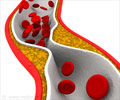It is quite clear that cardiovascular disease (CVD), driven by the global pandemics of obesity and diabetes, poses a daunting challenge to clinicians in the 21st century.

ESC Chairperson of the Task Force, Professor Zeljko Reiner, Director, University Hospital Center Zagreb, Croatia said that prevention and treatment of dyslipidaemia should always be considered within the broader framework of CVD prevention and the individual's total CV risk. 'Lipids are a key contributor to total CV risk. In this guideline the SCORE system, based on European data, has been used to categorise patients as very high, high, moderate or low CV risk, as a basis for treatment decisions. The moderate risk group includes many middle-aged people who tend to move to higher risk categories over time. These people are likely to be the most valuable group for lifestyle advice and, where needed, drug therapy for controlling lipids.'
Low-density lipoprotein (LDL) cholesterol remains the primary priority in lipid management. However, the targets have been readdressed. Clinicians should aim for LDL cholesterol levels below <3.0 mmol/L (-115 mg/dL) in moderate risk patients, <2.5 mmol/L (100 mg/dL) in high risk patients and <1.8 mmol/L (-70 mg/dL) and/or at least 50 percent reduction in levels if this target cannot be reached in very high risk patients. Professor Alberico Catapano, EAS Chairperson of the Task Force, Professor of Pharmacology, University of Milan and Director of the Center for the Study of Atherosclerosis in Milan, Italy, added: 'In addition to LDL cholesterol as the key target, two other options have been introduced: non-high-density lipoprotein (HDL) cholesterol and apolipoprotein B. Both provide a robust estimate of the efficacy of therapy and, in the near future as evidence accumulates, may represent the alternative choice to follow therapy.' Non-HDL cholesterol is calculated as total cholesterol – HDL cholesterol.
Comprehensive lipid control is a priority. The combined profile of high triglycerides and a low level of HDL cholesterol - atherogenic dyslipidaemia – is common in many high risk patients, including those with type 2 diabetes or metabolic syndrome. About one-third of adults in Europe have triglycerides >1.7 mmol/L (150 mg/dL) with or without low HDL cholesterol.1 Even with well controlled LDL cholesterol levels, these people are at high cardiovascular risk, as recognised by a recent EAS Consensus Panel paper.5 In this group, non-HDL cholesterol or apolipoprotein B are recommended as secondary targets.
The guidelines stress that lipid-modifying treatment needs to be tailored to patients according to their total CV risk. 'What is suitable for a 40-year old man without a family history of CVD is not appropriate for an elderly patient with a recent stroke. Treatment needs to be individualised,' commented ESC Review Coordinator, Professor Don Poldermans, Professor of Medicine and Head of Perioperative Cardiac Care, Erasmus Medical Centre, Rotterdam, the Netherlands.
Lifestyle interventions, including stopping smoking, improving diet, exercising sufficiently and moderate alcohol consumption, should be the crucial first step for managing lipids in all patients. High risk patients should receive specialist advice to encourage adherence. If lipid targets are not met with lifestyle alone, statins are the treatment of choice for lowering LDL cholesterol. Professor Christian Funck-Brentano, ESC Review Coordinator from the University Pierre and Marie Curie, Department of Pharmacology and Clinical Investigation Center, Groupe Hospitalier Pitié-Salpêtrière, Paris, France said: 'The choice of statin should be based on consideration of the extent of LDL cholesterol lowering required and the individual's total CV risk. However, cost effectiveness and quality of life issues also need to be taken into account. This is especially the case in people at low CV risk, in whom the use of statins is usually not appropriate.'
Advertisement
The guidelines provide treatment advice for a wide range of patients. 'There is no reason to deny the use of statins and other treatments in elderly patients as there is clear evidence that they derive similar benefit from LDL cholesterol lowering as younger patients. In particular, statin treatment reduces the risk of stroke in elderly patients, which has a major impact on quality of life. Additionally, treatment is important in postmenopausal women, in whom total CV risk may also be high. Under-treatment of women is a real issue warranting urgent action,' commented Professor Reiner. Data from the World Health Organization show that in the European Union, 55% of female deaths compared with just 43% of male deaths are due to CVD.
Advertisement
Speaking on behalf of the EAS, Professor Olov Wiklund, Senior Professor at Sahlgrenska Academy at Gothenburg University, Sweden and EAS Congress Chair said: 'These guidelines provide new insights into the complexity of dyslipidaemia and more specific treatment advice for different clinical settings. A major impact will be on the treatment of dyslipidaemia in the metabolic syndrome and in diabetes. Furthermore, the guidelines will contribute to the detection and treatment of familial dyslipidaemia, which is a group of patients at high risk but often untreated. The guidelines also focus on a more intense treatment of dyslipidaemia in patients with manifest cardiovascular disease.'
Successful implementation of these pivotal guidelines will help to drive the common mission of both the ESC and EAS to reduce the burden of CVD in Europe.
Source-Eurekalert











